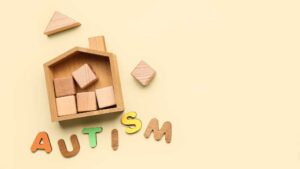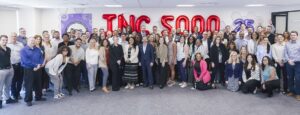Table of Contents
What is the difference between neurodiverse and neurodivergent?
Language is constantly evolving, and so is our understanding of the human mind. The terms “neurodivergent vs neurodiverse” have become more common in conversations about autism, ADHD, and other cognitive differences, but they are often misused, even in professional settings.
The incorrect use of the neurodivergent meaning and the neurodiversity definition can lead to confusion and miscommunication. So, what is the difference between neurodiverse and neurodivergent?
Understanding these terms is not just about getting the vocabulary right. It’s a crucial step toward fostering a more inclusive and accepting world for children, families, educators, and communities.
This blog by ABA Centers of Virginia will explore the origins and correct usage of these powerful words, clarifying their distinct meanings and demonstrating why precision in language is so important. By the end, you’ll have a clearer understanding of the neurodiversity definition and the true neurodivergent meaning, empowering you to speak about human cognitive variation with confidence and respect.
Neurodivergent vs Neurodiverse: Understanding the Roots
To truly grasp the difference between neurodivergent vs neurodiverse, it’s helpful to understand where these terms came from. They didn’t emerge from a medical handbook but from the minds of activists who wanted to change the conversation around neurological differences.
- Neurodiversity: In the late 1990s, an Australian sociologist named Judy Singer coined the term “neurodiversity.” Singer, who is on the autism spectrum herself, wanted to move the discussion away from the language of disease and disorder. She proposed that, just like biodiversity is essential for a healthy ecosystem, neurodiversity, the natural variation of human brains, is a normal and valuable aspect of humanity.

- Neurodivergent: A few years later, in 2000, activist Kassiane Asasumasu introduced the terms “neurodivergent” and “neurodivergence.” Asasumasu saw the need for a word to describe individuals whose minds function differently from what society considers “typical.” This term provided a way for people to identify themselves and their experiences without relying on deficit-based medical labels.

These terms were born from a social justice movement that sought to reclaim identity and challenge the idea that there is only one “right” way for a brain to work.
What Is the Neurodiversity Definition?
The Association for the Study of Medical Education defines neurodiversity as a biological fact that refers to the infinite variety of neurocognitive functioning within the human species. It’s a collective concept, much like biodiversity. You wouldn’t describe a single animal as “biodiverse”; instead, you’d say an entire rainforest is biodiverse. Similarly, neurodiversity describes a group, a community, or humanity as a whole.
- A group is neurodiverse. A classroom containing both neurotypical students and students with ADHD, dyslexia, and autism is a neurodiverse environment.
- Our society is neurodiverse. Our communities have individuals with a broad spectrum of brain functions and ways of thinking.
An individual cannot be neurodiverse or have neurodiversity. Instead, they are part of a neurodiverse population. Recognizing this is the first step in understanding the critical distinction in the neurodivergent vs neurodiverse debate.
What Is the Neurodivergent Meaning?
While neurodiversity describes the group, neurodivergent is the term used to describe an individual. A person is neurodivergent if their brain functions in a way that diverges from dominant societal norms or what is considered “neurotypical.”
Examples of neurodivergence include conditions such as:
- Autism Spectrum Disorder (ASD)
- Attention-Deficit/Hyperactivity Disorder (ADHD)
- Dyslexia, Dyspraxia, and Dyscalculia
- Tourette Syndrome
It is important to remember that being neurodivergent is not inherently harmful. The term itself is a non-judgmental descriptor. For many, identifying as neurodivergent is an empowering act that affirms their identity outside of a purely medical context. It allows for solidarity among people with different neurological profiles who share the experience of navigating a world often not designed for them.

Neurodivergent vs Neurodiverse: From Medical Model to Social Model
The distinction between neurodivergent vs neurodiverse is central to a significant shift in how we think about disability, the move from the medical model to the neurodiversity paradigm, which aligns with the social model of disability. Voices in Bioethics define the models as follows:
- The Medical Model: This traditional view frames neurological differences like autism as “disorders” or “deficits” that exist within the individual. The goal is often to “fix” or “normalize” the person so they can better fit into existing societal structures. Research has historically been led by non-autistic individuals, assuming that these conditions are pathologies.
- The Neurodiversity Paradigm: This newer perspective, rooted in the social model of disability, argues that the challenges neurodivergent people face often stem from a mismatch between their way of being and a society that fails to accommodate them. The “problem” is not the individual, but the barriers in the environment, be it inflexible school systems, inaccessible workplaces, or rigid social expectations. The solution, therefore, is not to change the person but to create a more inclusive and accepting society.
This paradigm doesn’t deny that neurodivergent individuals can face real difficulties. Sensory overload or executive dysfunction can be challenging regardless of the environment. However, it shifts the focus toward providing support and removing barriers, rather than trying to erase the underlying difference.
Common Misconceptions and How to Use the Terms Correctly
Using these terms accurately is a sign of respect and understanding. Here are some quick guidelines to help you navigate the nuances:
| Correct Usage | Incorrect Usage |
|---|---|
| "My son is neurodivergent." | "My son is neurodiverse." |
| "Our company is committed to building a neurodiverse workforce." | "We want to hire neurodivergent people." (While true, "neurodiverse" is better for describing the team goal.) |
| "This is a support group for neurodivergent students." | "This is a support group for neurodiverse students." |
| "Neurodiversity is a natural and valuable part of human variation." | "Neurodivergence is a natural and valuable part of human variation." (Neurodiversity is the variation itself). |
Avoiding these common mistakes helps honor the history and intention behind the words. It demonstrates that you recognize the difference between an individual’s identity and the diversity of a group.
Navigating Nuances in Different Settings
The language we use has a real impact on perceptions and acceptance. In professional, academic, or personal settings, using these terms correctly can create a more inclusive atmosphere.
- For educators: Understanding that a classroom is neurodiverse encourages the adoption of Universal Design for Learning (UDL), where teaching methods are flexible enough to support all students, not just those who are neurodivergent.
- For employers: Aiming for a neurodiverse team means recognizing that different ways of thinking can drive innovation. It prompts a shift from “culture fit” to “culture add,” where workforces value neurodivergent employees for their unique perspectives.
- For families: Embracing the neurodivergent meaning can help reframe challenges. Instead of seeing a child’s behavior as something to be corrected, parents can ask, “What support does my child need to thrive in this environment?”
ABA Therapy as a Supportive Resource
For families with children with autism, finding the proper support is essential. Applied Behavior Analysis (ABA) therapy is one approach that can empower children and their families. Modern, ethical ABA therapy is not about making a child “less autistic” or forcing them to conform.
Instead, it’s about providing them with tools to navigate the world more effectively and reducing stress in their daily lives.
A neurodiversity-affirming ABA approach focuses on:
- Building crucial communication and social skills in a way that respects the child’s natural tendencies.
- Teaching self-advocacy and emotional regulation.
- Providing parents with strategies to create supportive and accommodating home environments.
By centering the individual’s needs and strengths, ABA therapy can help neurodivergent children build independence and confidence.
Building a More Inclusive Future with ABA Centers of Virginia
Understanding the difference between neurodivergent vs neurodiverse is more than just a lesson in semantics; it’s a commitment to seeing the world through a more inclusive lens. Neurodiversity reminds us that every brain is unique, and this variation is a strength. Neurodivergent gives individuals a way to describe their experience with pride and connect with a larger community.
When we use these terms with intention and respect, we contribute to a world where we celebrate differences. We move away from a culture of normalization and toward a culture of acceptance, where everyone has the support and space to thrive just as they are.
If you are a parent or caregiver of a child with autism in Arlington and Washington, D.C., navigating this journey can feel overwhelming. At ABA Centers of Virginia, we are here to support you. We offer diagnostic testing, early intervention, and ABA therapy. Contact us today online or by calling (855) 957-1892 to learn how we can help your child flourish.







